Contents :
- A reminder about the provisional patent application
- The advantages of filing a provisional patent application
- Does a provisional patent application really protect you?
- Extending protection internationally: the limits of provisional patent applications
- File a provisional patent application, yes, but a quality provisional patent!
The provisional patent application is a new procedure introduced thanks to the PACTE bill. A number of articles on our site already explain the new opportunities brought about by the law on business growth and transformation(opposition to a patent in France, reinforcement of IPC confidentiality, extension of the utility certificate, etc.).
The bill’s initiatives are aimed particularly at small and medium-sized French businesses, start-ups and researchers, providing them with new procedures and mechanisms to facilitate the implementation of growth-generating strategies.
The advantages of filing a provisional patent application
In our article, we explain the advantages of a provisional patent application, but above all, we give you the keys to ensuring optimum protection.
Advantages of provisional patenting
- Much less expensive than a conventional patent application (€13 INPI fee, i.e. the fee for filing a provisional patent, without a search report)
- Transformable into a “normal” patent application within 12 months
- Fast procedureFew formalities at the time of filing.
Disadvantages of provisional patents
- Duration limited to 12 months
- Absence of the search report and the Examiner’s opinion on the patentability of the invention
- At the end of 12 months, the last deadline to proceed with an international extension, without having received a patentability opinion from the Examiner.
- After 12 months, obligation to transform into a “normal” patent to retain rights, with all formalities and substance required → expenses were postponed 12 months, not cancelled
- Risks of a final patent with limited scope of protection, as it is filed very early in the R&D process.
A reminder about the provisional patent application
Among the provisions of the PACTE law, a large part of the project aims to make the steps involved in protecting industrial property more accessible, and thus encourage innovation. With this in mind, from July 1, 2020, you’ll be able to file a provisional patent. This is a streamlined, low-cost procedure. You then have 12 months to transform this provisional patent filing into a patent application.
To apply for a patent, you need to provide theINPI with a complete description of your innovation, and a section called “claims” explaining the monopoly you wish to obtain. The procedure takes several months, at the end of which the office either agrees to issue the industrial property title, or simply rejects the application. However, getting to this stage already involves expenses for the payment of taxes and the fees of the professional accompanying you. And for a small company or an independent inventor, the cost of an industrial property strategy can quickly become an obstacle.
Filing a provisional patent application enables companies to develop their prototypes and continue their R&D work, while retaining legal precedence. The complexity and cost of the patent application procedure is removed, or at least postponed for a year.
Update on 2018 patent applications at INPI

| Domains | 2018 |
|---|---|
| Mechanical engineering | 7 016 |
| Electronics and electricity | 3 973 |
| Chemistry | 2 813 |
| Instruments | 2 520 |
| Other areas | 2 101 |
The advantages of filing a provisional patent application
Protecting innovations is an obvious growth driver for companies. Industrial property titles directly add value to a company, whether through financial enhancement, or by enhancing the value of a patent through its use in marketed products, or the provision of licenses (paid or unpaid, exclusive or non-exclusive).
The provisional patent application is therefore a simplified procedure for 1-year protection, enabling a company to obtain a prior art date at a low cost.
This is sometimes the ideal time to develop a prototype or validate a proof of concept (POC). A 12-month period also enables you to assess the market potential of your invention. You can even start marketing your product to achieve a proof of concept that will validate your work. It’s important to bear in mind that the patentability criteria for a patent require, among other things, complete confidentiality. However, in a development phase, it is often in a company’s best interest to be able to communicate about its innovation, if only to its financial partners, suppliers and future customers. In this sense, applying for a provisional patent provides early access to a prior art date for an innovation, even at an extremely early stage of research and development, and can be appended to confidentiality agreements.
Read: 3 stupid mistakes that make an invention unpatentable
Does a provisional patent application really protect you?
An industrial property title is formalized by a document describing the various characteristics of an innovation. The claims, which can be found at the end of a patent, define the legal contours of the monopoly. This is why drafting a patent requires both technical and legal expertise.
Once an industrial property title has been granted, the contours of legal protection are fixed.
This means that only the features described in the patent are protected. What’s more, as a legal document, the patent also opens the way to interpretations that may run counter to the interests of its holder. It is in this sense that provisional patents can represent a risk.
The simplicity of the provisional patent application naturally encourages you to complete the formality as soon as possible. But at an early stage of research & development, the description of your innovation, and the claims that accompany it, can be too simplistic.
Similarly, a description based essentially on quantitative measurement indicators (weight, size, etc.) is a common risk. If a competitor patents or markets a product that does not fall within the scope of the claims of your provisional patent, its validity and the possibility of it being converted into a patent are directly called into question.
Case in point:
A company has an innovation where tests are currently focused on spirulina, a microalga. The company wishes to file a provisional patent application, and is drafting the claims.

There are two possible scenarios:
1 – The patent only describes tests relating to spirulina, and claims its innovation in the context of an application specifically for spirulina.
→ Your patent only protects you for spirulina, and you have no prior art for other types of algae, even though your innovation applies perfectly to them.
2 – The patent describes tests relating to spirulina, but the wording of the patent and the claims propose an application of the innovation to all types of green microalgae, and to other algae, even if the preference is for spirulina.
→ Your patent protects spirulina-related applications from the outset, as well as all other green microalgae, and other algae. You anticipate the evolution of your R&D work, and protect your innovation more broadly.
YesMyPatent’s patent attorneys are accustomed to dealing with these risks, thanks to the provisional patent that already exists in the United States, and which they regularly file on behalf of their clients. We can advise you on the claims to be drafted for optimum protection of your innovations, taking into account the scenarios that could weaken your patent. It’s all the more important to call on a patent attorney specialized in your technical field!
N.B.: For conversion into a patent application, the content of your provisional patent application can be modified within 12 months without loss of prior art.
Extending protection internationally: the limits of provisional patent applications
In order to save on procedural costs, the provisional patent application does not include the search report. This means that you do not have the INPI’s opinion on the inventive step criterion.
Even if these elements are costly, they are valuable indicators that must be taken into account when protecting an invention. Thanks to these documents, the IPC is in a position to advise you on the potential of your invention, particularly for extending protection internationally. Without a search report, and without the opinion of the Examiner, a foreign patent application procedure(PCT, or European patent) becomes tricky.
Before choosing a provisional patent, we advise you to think carefully about your industrial property strategies, including your entire business plan. In order to carry out the right procedures at the right time, in the most optimal and protective way, the Industrial Property Attorney is competent to guide you.
Make an appointment with a CPI for personalized advice on your industrial property strategy.
File a provisional patent application, yes, but a quality provisional patent!
A quality patent is one in which the industrial property title is drafted in such a way as to provide optimum protection for its holder. The level of protection and the content of the claims may vary according to your particular situation.
When it comes to drafting a provisional patent tailored to your needs, it’s a good idea to call on the services of an industrial property attorney. A patent attorney can also advise you on the right procedures to adopt, depending on your situation and the stage of development of your innovation. CPI and lawyer work hand in hand.
These exchanges, subject to professional secrecy, lead to the drafting of claims that define the scope of protection for your innovation. If necessary, the creation of a figure by a professional draftsman completes the file. Note that the CPI is an INPI-accredited professional. As your representative, he or she can represent you before the administrative department to file the provisional patent application and follow the entire grant procedure.
Read more: Who can apply for a patent?
👍 YesMyPatent support for your provisional patent :
- Telephone appointment with an INPI-accredited industrial property attorney
- Drafting of claims to establish the protection perimeter
- Technical figures created by a professional draughtsman
- Administrative procedure for filing with INPI
- INPI taxes included ✓
